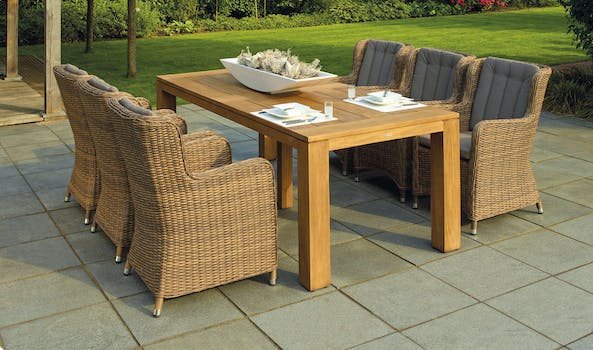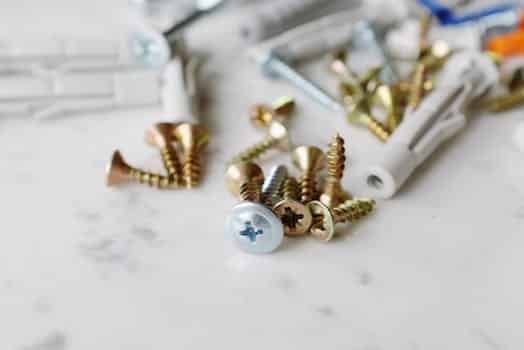Looking for creative ways to spruce up your outdoor space? DIY garden beds are a great option! Not only do they add aesthetic appeal, but they also provide a functional space for growing your own fruits, vegetables, and flowers. Whether you have a small balcony or a large backyard, we’ve compiled a list of 10 DIY garden bed ideas to inspire your next outdoor project.
- 1. Introduction
- 1.1. Benefits of creating DIY garden beds
- 1.2. Types of garden beds
- 1.3. Materials needed for creating garden beds
- 1.4. Factors to consider before creating garden beds
- 1.5. Basic steps for creating garden beds
- 2. Raised Garden Beds
- 2.1. Materials needed for creating raised garden beds
- 2.2. Design ideas for raised garden beds
- 2.3. Advantages of using raised garden beds
- 2.4. Tips for planting in raised garden beds
- 2.5. Maintenance of raised garden beds
- 3. Vertical Garden Beds
- 3.1. Materials needed for creating vertical garden beds
- 3.2. Design ideas for vertical garden beds
- 3.3. Advantages of using vertical garden beds
- 3.4. Tips for planting in vertical garden beds
- 3.5. Maintenance of vertical garden beds
- 4. Container Garden Beds
1. Introduction
Gardening is one of the most rewarding hobbies that one can indulge in. It not only helps in beautifying your surroundings but also provides you with fresh produce that you can enjoy. However, not everyone has ample space for a full-fledged garden. But worry not, as there are plenty of DIY garden bed ideas that can help you make the most of your outdoor spaces. In this article, we have compiled a list of 10 such ideas that are easy to execute and will give your garden a whole new look.
1.1. Benefits of creating DIY garden beds
There are numerous benefits to creating your own DIY garden beds for your outdoor space. First and foremost, you have complete control over the size, shape, and design of your garden bed. This means you can tailor it to fit your specific needs and preferences. Additionally, creating your own garden bed allows you to choose the type of soil and fertilizer you use, ensuring that your plants receive the exact nutrients they need to thrive. DIY garden beds are also great for small outdoor spaces, such as balconies or patios, as they allow you to grow plants vertically, maximizing your space. Finally, creating your own garden bed can be a fun and rewarding project, giving you a sense of satisfaction and accomplishment as you watch your plants grow and flourish.
1.2. Types of garden beds
Garden beds come in various types and designs, each serving a different purpose and aesthetic. Raised garden beds are popular for their ease of use and ability to control soil quality, while container gardens are perfect for those with limited outdoor space. Traditional in-ground garden beds offer the most flexibility in terms of size and shape, while vertical gardens provide a unique and space-saving option. No matter the type, garden beds are a great way to grow your own fruits, vegetables, and flowers right in your own backyard.
1.3. Materials needed for creating garden beds
When it comes to creating garden beds for your outdoor space, you will need some basic materials. The first thing you will need is wood planks or bricks to create the borders of your garden bed. You will also need a shovel to dig up the area where you want to create your bed. Depending on the size of your garden bed, you may also need soil, compost, and mulch to fill it up. Other helpful materials include a level to ensure that your garden bed is even and a measuring tape to measure the dimensions of your bed. With these materials, you will be well on your way to creating a beautiful and productive garden bed in your outdoor space.
1.4. Factors to consider before creating garden beds
Before embarking on creating garden beds for your outdoor space, there are certain factors that you need to consider. These factors will help you make informed decisions and ensure that your garden beds are successful. Some of the factors to consider include the location, size, soil quality, sunlight exposure, drainage, and the types of plants that you want to grow. By taking these factors into account, you can create garden beds that are not only aesthetically pleasing but also functional and sustainable.
1.5. Basic steps for creating garden beds
Before you start creating your garden beds, there are a few basic steps you should take to ensure success. First, choose the location for your garden bed. Look for an area that gets plenty of sunlight and has good drainage. Next, clear the area of any grass or weeds and loosen the soil. You can do this by using a garden fork or tiller. Once the soil is loosened, add any necessary amendments such as compost or fertilizer. Finally, create the outline of your garden bed using stakes and string, or by using a garden hose to mark the shape.
2. Raised Garden Beds
Raised garden beds are a great option for outdoor spaces. Not only do they help with drainage and soil quality, they also make gardening easier by reducing the need to bend over and work at ground level. Plus, they can be customized to fit any space and style. Here are 10 DIY garden bed ideas for creating your own raised garden beds:
2.1. Materials needed for creating raised garden beds
When it comes to creating raised garden beds, there are a few key materials you will need. First and foremost, you will need wood to construct the bed itself. Cedar or redwood are popular choices as they are naturally resistant to rot and insects. You will also need a saw, drill, and screws to assemble the bed. Additionally, you will need soil, compost, and mulch to fill the bed and provide nutrients for your plants. Lastly, you may want to consider adding landscaping fabric to prevent weeds from growing up through the bed and a drip irrigation system to ensure your plants receive enough water.
2.2. Design ideas for raised garden beds
Raised garden beds not only provide a functional space for growing plants, but also can add a visually appealing element to your outdoor space. Here are some design ideas to consider when creating your own raised garden beds:
1. Mix Materials: Combine different materials such as wood, stone, and metal to add interest and texture to your garden bed.
2. Vary Heights: Create a dynamic look by incorporating raised beds of varying heights. This not only adds visual interest, but also allows for easier access when tending to your plants.
3. Add a Trellis: Consider adding a trellis to your raised garden bed to support climbing plants such as tomatoes or cucumbers. This not only adds functionality, but also adds vertical interest to the garden bed.
4. Incorporate Lighting: Adding lighting to your raised garden bed can create a beautiful ambiance in the evening hours. Consider adding solar-powered lights or string lights to highlight the beauty of your plants.
5. Use Color: Incorporate colorful plants and flowers to add a pop of color to your garden bed. This not only adds visual interest, but also attracts pollinators to your garden.
2.3. Advantages of using raised garden beds
Using raised garden beds offers a number of advantages for gardeners. Firstly, raised beds provide better drainage as the soil is elevated above ground level. This helps to prevent waterlogging and ensures that plants have access to the right amount of moisture. Secondly, raised beds allow for better control over soil quality and nutrient levels, which can be adjusted to suit specific plants or crops. Thirdly, raised beds are easier to maintain as they require less bending and kneeling, making them ideal for people with mobility issues or back problems. Finally, raised beds can help to improve the appearance of a garden by creating defined areas and neat, tidy borders.
2.4. Tips for planting in raised garden beds
Raised garden beds are a great way to grow your own vegetables and flowers. Here are some tips for planting in raised garden beds:
1. Choose the right location: Make sure your raised garden bed is in a location that gets plenty of sunlight and has good drainage.
2. Prepare the soil: Add compost or other organic matter to the soil to help it retain moisture and nutrients.
3. Plant the right plants: Choose plants that are appropriate for your climate and the amount of sunlight your garden bed receives.
4. Water regularly: Raised garden beds can dry out quickly, so make sure to water your plants regularly.
5. Mulch: Add a layer of mulch to your garden bed to help retain moisture and prevent weeds.
By following these tips, you can create a thriving garden in your raised garden bed.
2.5. Maintenance of raised garden beds
Once you have set up your raised garden beds, it is important to properly maintain them to ensure healthy growth of plants. Here are some tips for maintaining your raised garden beds:
1. Regular watering: Water your plants regularly to keep the soil moist. The frequency of watering depends on the type of plants and weather conditions.
2. Soil care: Check the soil regularly and remove any weeds or debris. Add compost or other organic matter to the soil to improve its quality.
3. Pest control: Keep an eye out for pests and take appropriate measures to control them. Use natural remedies or pesticides as needed.
4. Mulching: Add a layer of mulch to the soil to help retain moisture and prevent weed growth.
By following these simple steps, you can maintain healthy raised garden beds and enjoy a bountiful harvest.
3. Vertical Garden Beds
Vertical garden beds are a great option for those who have limited outdoor space or want to add some greenery to their walls. These garden beds can be created using a variety of materials such as pallets, gutters, and even shoe organizers. One advantage of vertical garden beds is that they can be placed in any sunny spot, making it easy to grow a variety of plants. To create a vertical garden bed, simply attach your chosen material to a wall or fence, add soil and plants, and water regularly. Some popular plants for vertical garden beds include herbs, succulents, and trailing plants like ivy and ferns.
3.1. Materials needed for creating vertical garden beds
When it comes to creating vertical garden beds, there are a few essential materials that you will need. These include:
1. Vertical garden frame or structure – this can be made from wood, PVC piping, or metal.
2. Growing medium – choose a high-quality soil or a soilless mix that is specifically designed for vertical gardening.
3. Plants – select plants that are suitable for vertical gardening and that will thrive in the growing conditions you provide.
4. Irrigation system – depending on the size and complexity of your vertical garden, you may need a drip irrigation system or a simple watering can.
5. Fertilizer – plants grown in a vertical garden may require more nutrients than those grown in traditional garden beds, so it’s important to use a high-quality fertilizer.
By investing in these essential materials, you can create a stunning and productive vertical garden that will be the envy of your neighborhood!
3.2. Design ideas for vertical garden beds
Vertical garden beds are a great way to add some greenery to your outdoor spaces, even if you have limited space. Here are some design ideas to inspire your DIY vertical garden bed projects:
1. Repurpose an old wooden ladder by adding shelves to each rung, filling them with soil, and planting your favorite herbs, succulents, or flowers.
2. Create a living wall by attaching planters to a trellis or wire mesh and planting them with cascading plants like ferns, ivy, or petunias.
3. Use PVC pipes or gutters to create a vertical herb garden. Cut the pipes or gutters into sections, drill holes in the bottom for drainage, and attach them to a wall or fence.
4. Stack cinder blocks to create a raised garden bed. Fill the blocks with soil, leaving some openings for planting, and add some colorful annuals or perennials.
5. Hang a shoe organizer on a wall or fence and fill each pocket with soil and a small plant. This is a great way to grow herbs, lettuce, or strawberries.
These are just a few ideas for creating a vertical garden bed. Get creative and experiment with different plants and materials to create a unique and beautiful outdoor space!
3.3. Advantages of using vertical garden beds
Vertical garden beds offer several advantages over traditional garden beds. Firstly, they are space-efficient and can be used in small outdoor spaces such as balconies or patios. Secondly, they allow for better air circulation which can lead to healthier plants. Thirdly, vertical garden beds are easier to maintain as they are elevated off the ground, making it easier to weed, water and harvest. Additionally, they can be used to create a beautiful and unique focal point in any outdoor space, adding to the overall aesthetic appeal of your garden.
3.4. Tips for planting in vertical garden beds
Vertical garden beds are a great way to maximize the space in your outdoor area while still being able to enjoy a beautiful garden. However, planting in these beds can be a bit different than traditional gardening. Here are some tips to help you get started:
1. Choose the Right Plants: When selecting plants for your vertical garden, consider their size and growth habits. Choose plants that are small enough to fit in the limited space and won’t grow too big and heavy, causing the structure to collapse.
2. Soil Mix: Use a soil mix that is specifically designed for container gardening. This will help ensure your plants receive the nutrients they need to thrive.
3. Watering: Vertical garden beds may dry out more quickly than traditional garden beds, so it’s important to water them regularly. Consider using a drip irrigation system to make watering easier and more efficient.
4. Plant Spacing: Proper plant spacing is important in any garden, but it’s especially important in a vertical garden. Be sure to leave enough space between plants to allow for proper airflow and growth.
5. Maintenance: Regular maintenance is key to keeping your vertical garden healthy and looking great. This includes pruning, fertilizing, and pest control.
By following these tips, you can create a beautiful and thriving vertical garden that will be the envy of your neighborhood!
3.5. Maintenance of vertical garden beds
Maintaining a vertical garden bed requires some effort, but it is not too difficult. Here are some tips for keeping your vertical garden beds healthy and productive:
1. Watering: Vertical garden beds need to be watered regularly, especially during hot and dry weather. Make sure that the soil is moist but not waterlogged, as this can lead to root rot.
2. Fertilizing: Use a good quality fertilizer to provide your plants with the nutrients they need to grow strong and healthy. Follow the instructions on the packaging for best results.
3. Pruning: Regularly prune your plants to keep them from becoming too crowded and to encourage new growth. Cut off any dead or diseased leaves or stems to keep your plants looking their best.
4. Pest control: Keep an eye out for pests such as aphids, mealybugs, and spider mites, which can damage your plants. Use a natural insecticide to control these pests if necessary.
By following these simple maintenance tips, you can enjoy a beautiful and bountiful vertical garden bed in your outdoor space.
4. Container Garden Beds
If you have limited outdoor space or want to create a portable garden, container garden beds are a great option. These are essentially raised garden beds, but instead of being built directly into the ground, they are constructed within containers or pots. You can use a variety of containers, including plastic bins, wooden crates, or even old tires. Container garden beds are perfect for growing herbs, flowers, and small vegetables. They also allow you to easily move your garden around depending on the season or your personal preferences.
4.1. Materials needed for creating container garden beds
When it comes to creating a container garden bed, there are a few essential materials that you will need. These include:
1. Containers: You can use a variety of containers for your garden bed, including pots, planters, and even old buckets.
2. Soil: Good quality soil is essential for the health and growth of your plants. Look for soil that is rich in nutrients and has good drainage.
3. Mulch: Mulch helps to retain moisture in the soil, suppress weeds, and regulate soil temperature.
4. Plants: Choose plants that are well-suited to container gardening, such as herbs, vegetables, and flowers.
5. Fertilizer: Fertilizer provides your plants with the nutrients they need to grow and thrive.
By gathering these materials, you can create a beautiful and thriving container garden bed that will enhance the beauty of your outdoor space.
4.2. Design ideas for container garden beds
Container gardens are a great way to add some greenery to your outdoor space, regardless of how much space you have. With a little creativity, you can transform ordinary containers into stunning garden beds that will make your neighbors green with envy. Here are some design ideas to get you started:
1. Use different sizes and shapes of containers to create visual interest.
2. Mix and match colors and textures of plants to create a vibrant and dynamic garden.
3. Create a focal point with a large container filled with a tall plant or a group of plants.
4. Use trailing plants to soften the edges of your containers and create a more natural look.
5. Consider using edible plants, such as herbs or vegetables, in your container garden to add both beauty and functionality.
With these design ideas, you can create a container garden bed that is both beautiful and functional for your outdoor space.
4.3. Advantages of using container garden beds
Container garden beds have become increasingly popular in recent years due to their numerous advantages. Some of the benefits of using container garden beds include:
1. Flexibility: Container garden beds are highly flexible and adaptable. They can be placed anywhere, whether on a balcony, patio, or even indoors. This makes them ideal for people who have limited outdoor space or live in apartments or condos.
2. Portability: Container garden beds are portable, meaning they can be moved around easily. This is especially useful for people who like to rearrange their outdoor spaces or who want to move their plants indoors during the colder months.
3. Better Soil Control: Container garden beds allow for better soil control, as gardeners can choose the type of soil they want to use. This is particularly important for people who live in areas with poor soil quality.
4. Pest Control: Container garden beds can help to keep pests at bay. By elevating plants off the ground, gardeners can reduce the risk of pest infestations.
5. Aesthetically Pleasing: Container garden beds can be used to create beautiful and visually striking outdoor spaces. With a little creativity, gardeners can mix and match different plants and containers to create a unique and personalized garden bed.
4.4. Tips for planting in container garden beds
Container garden beds are a great way to add greenery to your outdoor space, especially if you have limited space or no access to a traditional garden bed. Here are some tips for planting in container garden beds:
1. Choose the right container: Make sure the container has proper drainage holes and is large enough for the plant’s root system to grow.
2. Use high-quality soil: Use a soil mix specifically designed for container gardening, which will provide the necessary nutrients and drainage.
3. Pick the right plants: Choose plants that are suitable for container gardening and will thrive in your specific environment.
4. Water regularly: Container plants may require more frequent watering than plants in traditional garden beds, so be sure to check the soil moisture level regularly.
5. Fertilize as needed: Container plants may also require more frequent fertilization, as nutrients can leach out of the soil more quickly than in a traditional garden bed.
4.5. Maintenance of container garden beds
Once you have set up your container garden beds, it is important to maintain them properly to ensure healthy growth of your plants. Here are some tips for maintaining your container garden beds:
1. Watering: Container garden beds require frequent watering, especially during hot weather. Water your plants regularly, but be careful not to overwater them. Make sure the soil is moist but not waterlogged.
2. Fertilizing: Use a good quality fertilizer to nourish your plants. You can use organic or synthetic fertilizers, depending on your preference. Follow the instructions carefully and avoid over-fertilizing.
3. Pruning: Regular pruning helps to keep your plants healthy and promotes new growth. Remove any dead or diseased branches, and trim back any overgrown areas.
4. Pest control: Keep an eye out for pests and take action as soon as you notice any signs of infestation. Use natural or chemical pest control methods, depending on the severity of the problem.
By following these simple tips, you can maintain your container garden beds and enjoy healthy, thriving plants throughout the growing season.
Conclusion
Incorporating a garden bed into your outdoor space can add beauty and functionality. With these 10 DIY garden bed ideas, you can create a unique and personalized garden that fits your style and needs. From raised beds to vertical gardens, there are options for every size and shape of outdoor space. Get started on your gardening journey with these inspiring ideas.






These 10 innovative and imaginative DIY home decor ideas from [object Object] provide a refreshing approach to enhancing ones living…